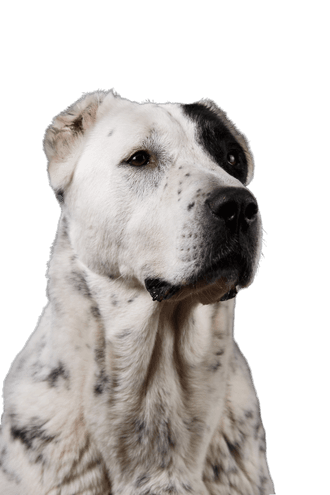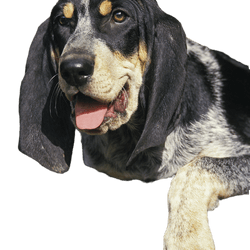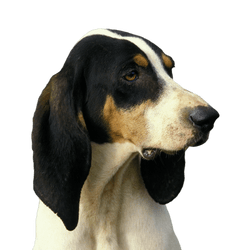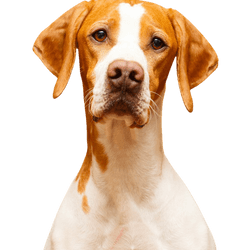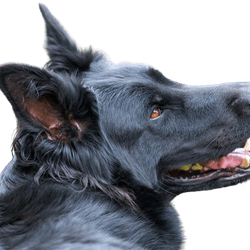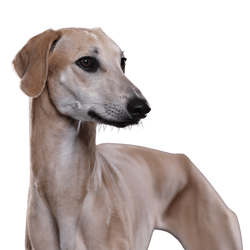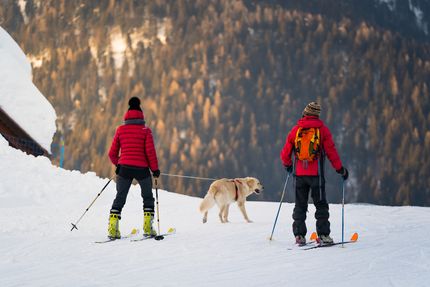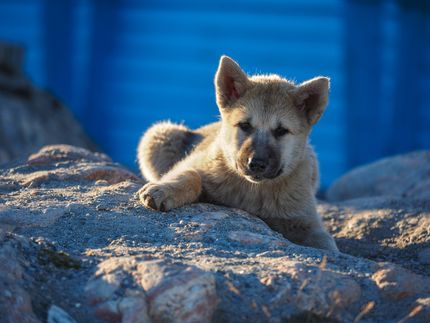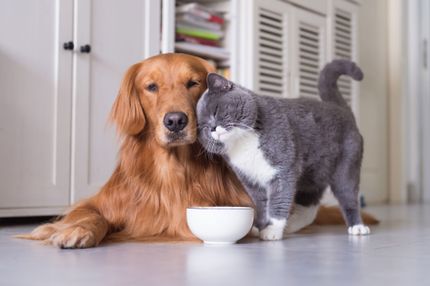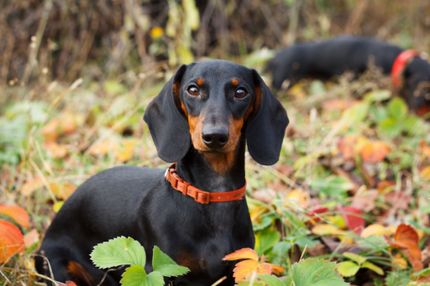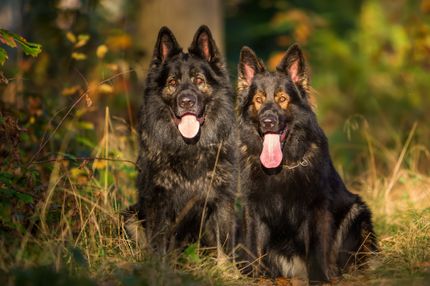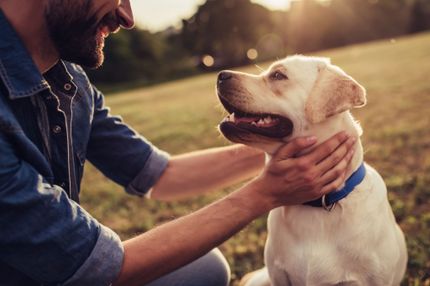Facts & Origin
Origin and history
The Central Asian Ovcharka, also known as the Alabai, is one of the oldest dog breeds in the world. It developed over more than 4,000 years in the vast regions between the Caspian Sea, China, the southern Urals and Afghanistan. Its ancestors are descended from the Tibetan Mastiff and the herding dogs of nomadic tribes.
Targeted breeding began in the 1930s in the Soviet Union, where the dogs were further developed for livestock protection and military purposes.
Suitability and use
This robust breed was traditionally used to guard livestock, caravans and homes and was exposed to extreme climatic conditions and constant battles with predators. As a result, the Ovcharka developed into a powerful, fearless and energy-efficient protector that makes independent decisions.
The Alabai as a list dog
In the Swiss canton of Ticino , the Central Asian Ovcharka is considered a potentially dangerous dog breed and may only be kept there with an official permit.
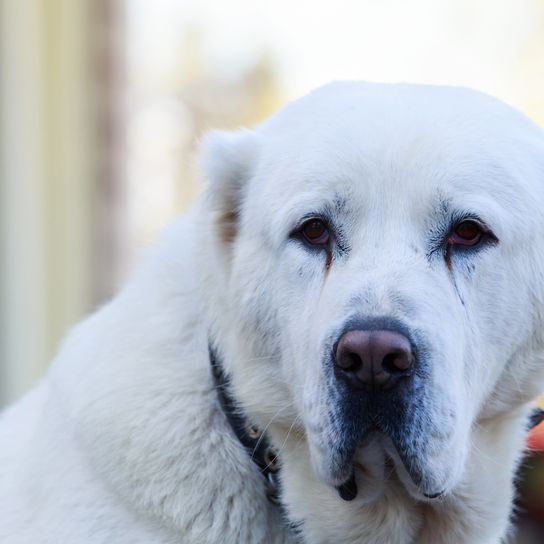
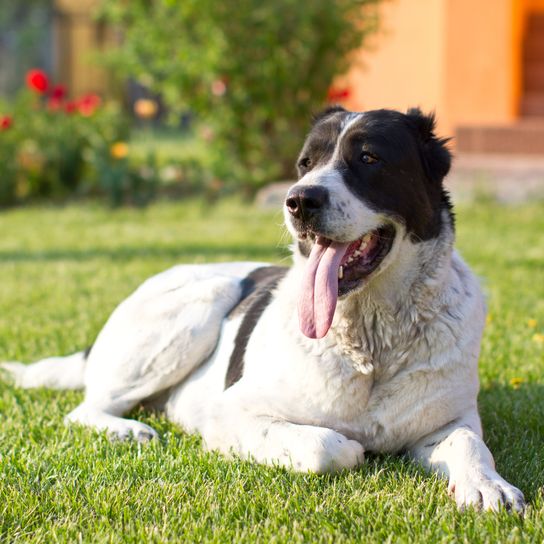
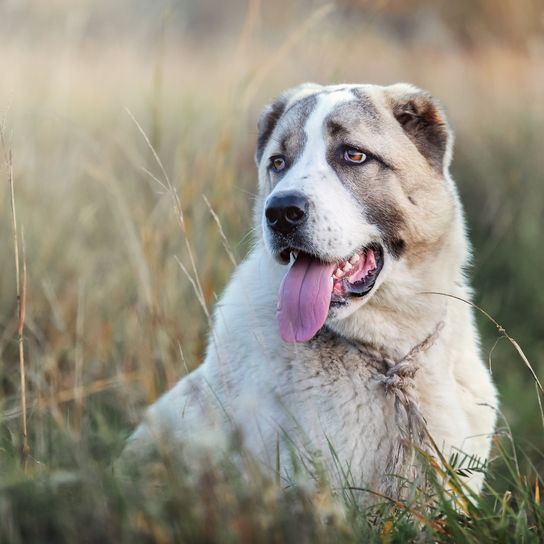
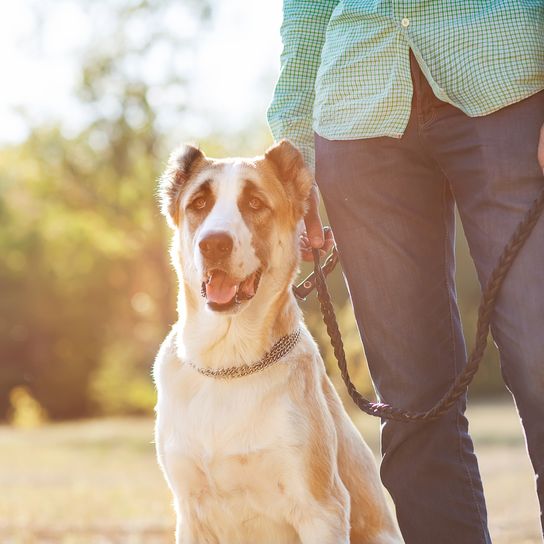
| Alternate Name | Central Asian Shepherd Dog, Alabai, Akbai, Kurt Kopek, Sage Rama |
| Origin | Russia |
| Life expectancy | 12 - 14 years |
| Care requirements | low-maintenance |
| Activity level | average |
| FCI group | Pinscher and Schnauzer type |
| AKC group | Foundation Stock Service |
| KC group | not recognised |
Attitude, character and temperament of the breed
Typical character traits
The Central Asian Ovcharka is self-confident, calm and independent, but at the same time shows extreme vigilance and readiness to protect. Its courage and willingness to work make it a reliable guard. It has a strong territorial instinct and defends its territory independently. However, this dog knows no fear - he is not afraid to take on large predators or intruders. It is also surprisingly agile and persistent despite its size.
Interaction and socialization
Despite its impressive size and strength, the Central Asian Ovcharka has a gentle core that needs to be properly addressed:
- Towards strangers: It can be suspicious of strangers and therefore requires thorough socialization from an early age.
- With other animals: He generally gets along well with other dogs as long as he is properly socialized. However, his strong protective instinct can lead him to see smaller animals as a potential threat.
Education and training
The Central Asian Ovcharka requires consistent and thoughtful training. It respects authority and needs clear instructions. A wavering or insecure owner may have difficulty training him, as his intelligent and independent nature makes him difficult to train for inexperienced dog owners.
Character
Usage
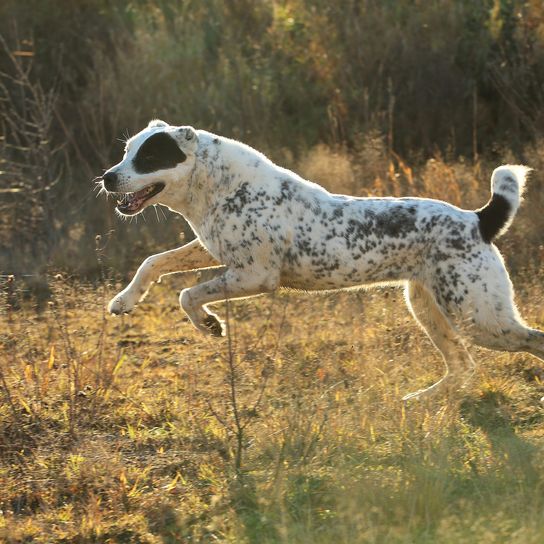
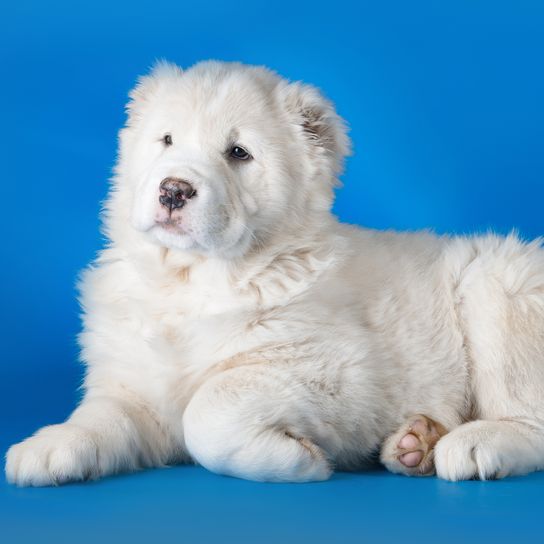
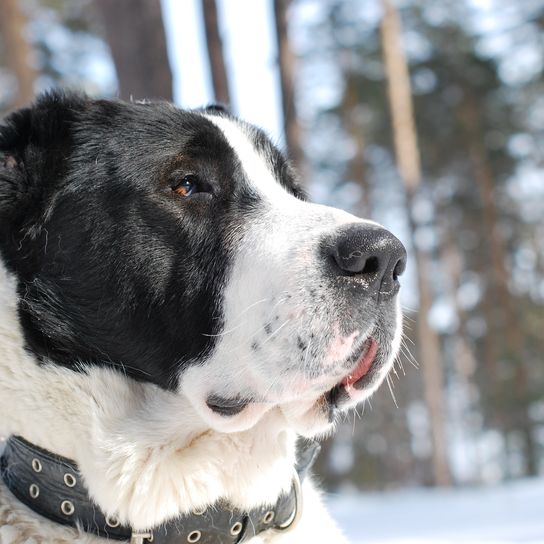
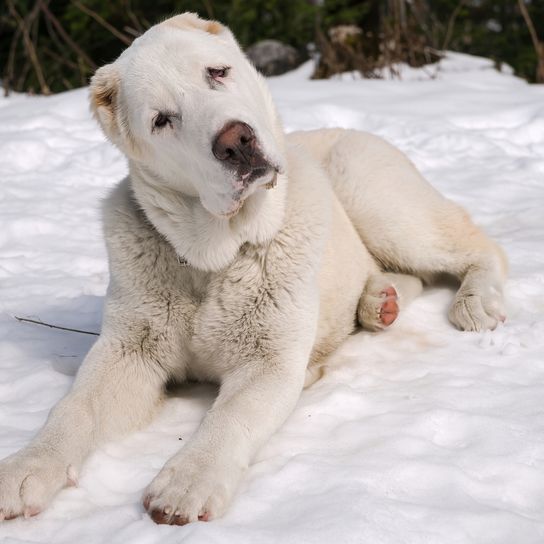
Care of the Ovcharka
The Central Asian Ovcharka has a dense, coarse coat that requires special care:
- Regular brushing: To avoid matting and accumulation of loose fur, it should be brushed thoroughly at least once a week.
- Bathing: Only when necessary, as frequent bathing can strip the natural oils from his coat.
- Paw care: The robust paws should be checked regularly for cracks or foreign bodies.
- Dental hygiene and ear care: Regular teeth brushing, claw length checks and ear checks are essential for his general health.
Health aspects
Despite its robustness, there are some health concerns to be aware of: As with many large dogs, the Ovtscharka can be prone to hip dysplasia and joint disease . Heart disease has been observed in some cases, so regular check-ups with a vet are recommended.
Breeding and heredity
Breeding the Central Asian Ovcharka requires knowledge and experience: potential breeding dogs should be tested for health problems to minimize the risk of hereditary diseases and breeders should know the genetics and lines of their breeding dogs well and only use healthy dogs with a good temperament for breeding.


Appearance and proportions
The Central Asian Ovcharka is a large, strong and muscular dog with a voluminous build. Despite its mass, it appears harmoniously proportioned and not clumsy.
- Males reach a height at the withers of at least 70 cm, bitches at least 65 cm.
- The weight is at least 50 kg for males and 40 kg for females.
- The body length is only slightly greater than the height at the withers, which gives it a stable stature.
The differences between the sexes are particularly noticeable: males are bulkier, bolder and have a stronger head with pronounced withers. These dogs do not reach full physical and mental maturity until they are three years old.
Head and expression
The head of the Central Asian Ovcharka is massive and rectangular in shape, giving it a powerful appearance. The broad forehead merges into a moderately pronounced stop. The nose is large and usually black, but may be slightly lightened in lighter-colored dogs.
The muzzle is of medium length, strong and slightly rectangular in shape. The thick lips are firmly attached and should ideally be pigmented black. The jaw is extremely strong, equipped with a complete and strong scissor, pincer or reverse scissor bite.
The medium-sized, oval eyes are set wide apart and point directly forward. They are usually dark in color and give the Owtscharka a confident and dignified expression.
Its triangular, hanging ears are set low and close to the head. Ear cropping is still common in some countries, but has been banned in many regions.
Physique and musculature
The strong neck of the Central Asian Ovcharka is of medium length, oval in cross-section and well-muscled, giving it an imposing stature. A pronounced dewlap is typical of this breed and contributes to its characteristic appearance.
The withers are prominent and merge into a broad, well-muscled back, which gives the dog stability and strength. The loins are short, strong and slightly arched, while the broad, slightly sloping croup rounds off its robust body structure. His deep and broad chest emphasizes the impressive presence of this breed, while the belly line is slightly tucked up, which gives him a certain agility despite his size.
The high-set tail is thick and strong. It is carried naturally as a sickle tail or loosely curled over the back. In some countries, tail docking is still permitted, while in others it has already been banned.
Limbs and gait
The strong limbs of the Central Asian Ovcharka are well muscled and harmoniously proportioned to its massive build. The forelegs are straight and strong-boned, with a slightly sloping shoulder that provides stability and powerful movement. The hind legs are slightly wider than the forelegs and just as massive, giving the dog impressive stability.
His large, round paws are equipped with thick, resistant pads, which allow him to tread safely even on rough terrain. His gait is balanced, elastic and powerful, with a free front step and a strong drive from the hindquarters, which makes him surprisingly agile despite his size.
Coat and care
The dense, weatherproof coat protects the Owtscharka from extreme temperatures.
- There are two coat lengths:
- Short-haired variety (3-5 cm)
- Long-haired variety (7-10 cm) with mane, feathering and bushy tail
- The undercoat is soft and dense, which makes it particularly resistant to the cold.
- All colors are permitted, except genetically blue, brown or black coat with tan markings.
Grooming is uncomplicated, but he sheds large amounts of hair during shedding.
| Fur length | medium |
| Fur | - |
| Ear shape | Floppy Ear |
| Tail | lang |
| Anatomy | rugged |
| Size ♀ | 60 - 69 cm |
| Weight ♀ | 45 - 65 kg |
| Size ♂ | 65 - 78 cm |
| Weight ♂ | 55 - 79 kg |
| Suitable For | - |



Known Diseases
Hip dysplasia (HD)
Hip dysplasia (HD) is a genetic condition in dogs where the hip joint is not shaped properly. This leads to pain, stiffness and restricted movement.
Joint problems
Especially due to overweight, joint problems can occur in dogs.
FAQ
-
The Central Asian Ovcharka, also known as the Alabai, is an ancient guard dog breed from Central Asia. It has been bred for centuries in countries such as Kazakhstan, Turkmenistan, Uzbekistan and Russia to protect herds, houses and farms from predators and intruders.
-
This breed is one of the largest and strongest livestock guarding dogs.
- Males: 65-78 cm height at withers, 50-79 kg
- Females: 60-69 cm at the withers, 40-65 kg
-
It can be a faithful and loyal family dog, but it is not a typical beginner's dog. These dogs are independent, territorial and very alert. With early socialization and consistent training, he can integrate well into a family, but often remains reserved towards strangers.
-
Despite its size, the Owtscharka is enduring and agile, but does not require excessive exercise. A large, well-secured property and long walks are enough for him. However, it should not be overtaxed with intensive dog sports.
-
No, he is stubborn and independent. As a traditional guard dog, he makes his own decisions, which makes him more difficult to train. Patience, consistency and experience with independent dogs are required. An inexperienced owner can quickly reach their limits.
-
Very strong! The Ovcharka was bred to defend its herd and home independently. It decides for itself when danger threatens and can be very suspicious of strangers. Without good socialization, it tends not to tolerate unfamiliar people and animals.
-
Yes, but only with early habituation. He protects his own animals, but often does not accept strange dogs or cats. Small animals could be seen as prey. Other dogs are usually only tolerated in a well-managed pack.
